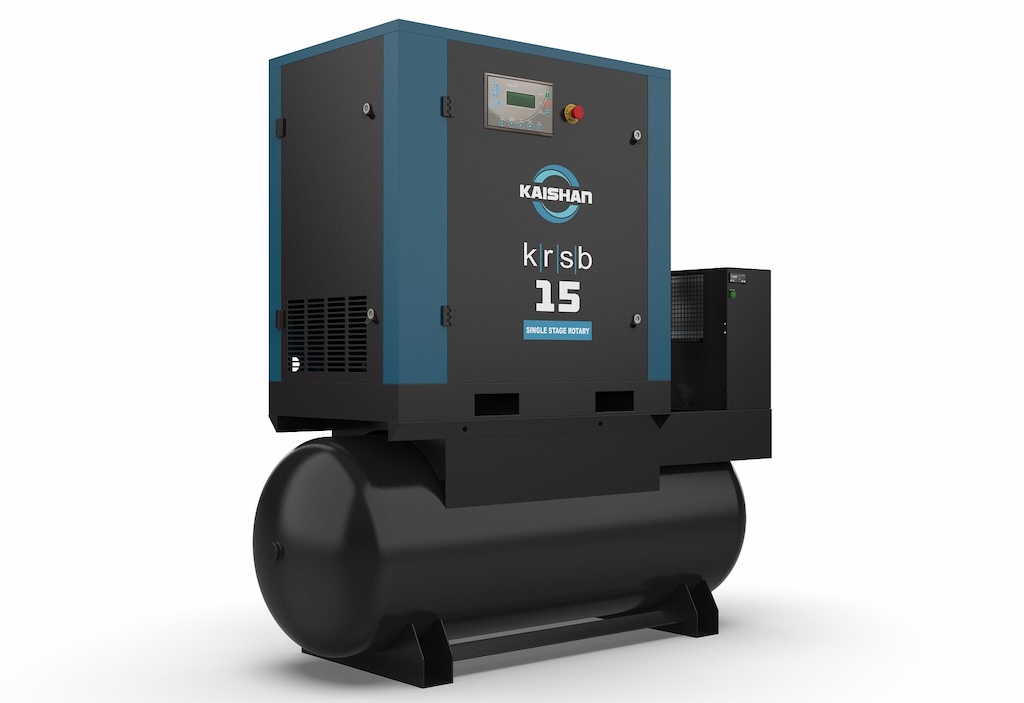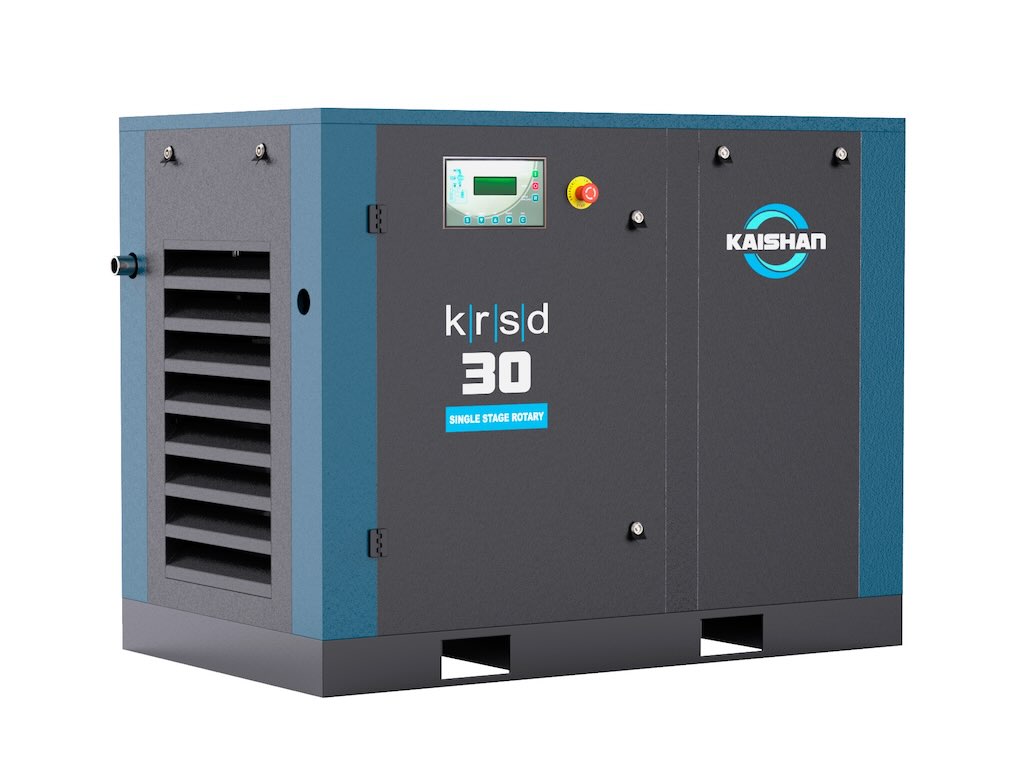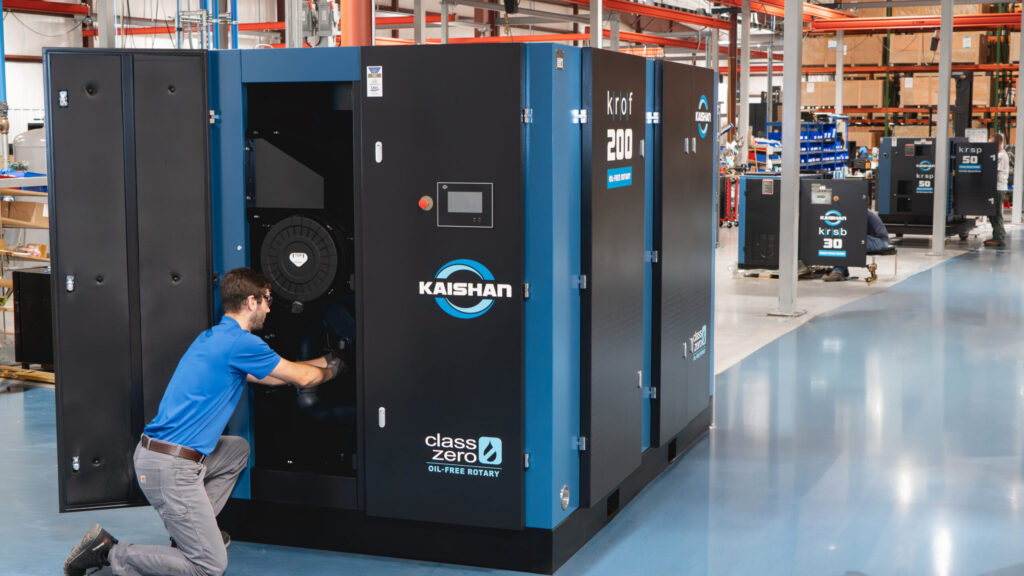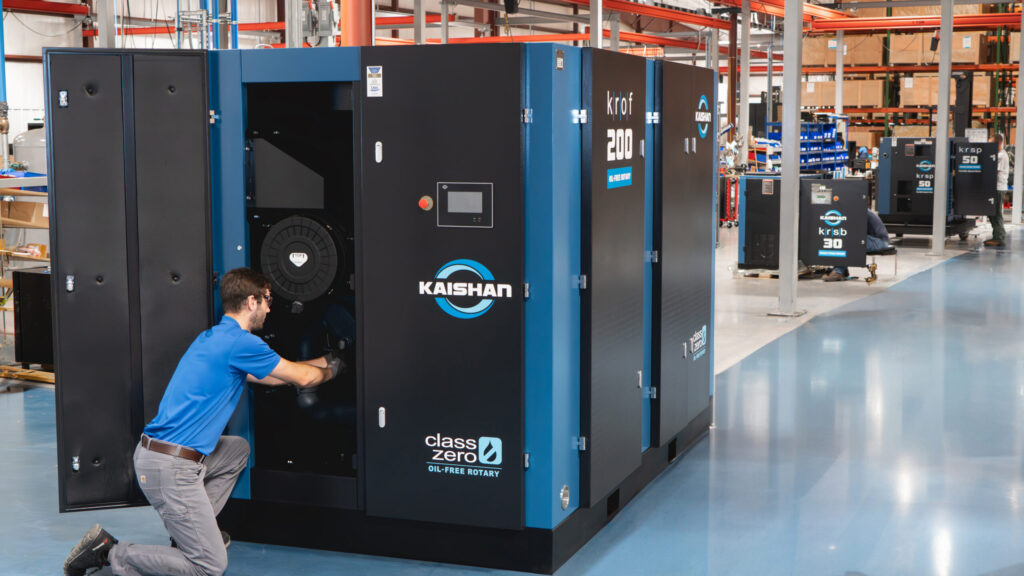For many sectors of process and energy industries such as food and drink, pharmaceutical, electronics, textile manufacturing, as well as nuclear and offshore engineering, there is a need for pure process air without the additional costs, limitations, and risks related to in-line filtration systems.
Key Concepts
Filters cannot remove all the oil coming from a lubricated compressor.
Oil-free compressors cost more, but capital costs over a 10-yr period are only 7% of total running costs.
Consequences of oil in process air must be carefully evaluated.
Sections: Change of view The risk Capital costs Is oil free air needed?
For many sectors of process and energy industries such as food and drink, pharmaceutical, electronics, textile manufacturing, as well as nuclear and offshore engineering, there is a need for pure process air without the additional costs, limitations, and risks related to in-line filtration systems.
The question of air quality and its relevance to these industries and other applications is one that has been debated by suppliers and users of compressed air equipment for many years. In the past, the choice was simple; if air quality was important, an oil-free compressor was used; if air quality was unimportant, an oil-lubricated compressor was used.
In both instances it would be rare to see a filter in place other than on the inlet of the compressor. In recent years it has become increasingly common to see oil-lubricated machines fitted with banks of filters and operating in processing environments that would formerly have required oil-free machines and oil-free air.
Change of view
What has brought about this significant change of view? Is it due to a sudden increase in efficiency and reliability of filtration equipment, or perhaps an increase in the efficiency and effectiveness of filtration salesmen?
Could the reason be that in times of economic hardship, short-term, lower-cost solutions become more attractive under the ever-increasing influence of company accountants, despite the convincing counter-arguments of quality control and engineering departments?
Maybe it is simply that, despite being environmentally aware, ’90s production people just have not yet come around to thinking about the compressed air part of the process? The arguments for the different types of systems are many and complex and need to be reviewed painstakingly, application by application. But, the decision starting point must always be “What quality of air do I need?” to be quickly followed by “What is the impact of not achieving that quality?”
The risk
Using a modern lubricated compressor without any filters will result in the presence of oil at 3 ppm in the air supply when everything is working according to design. If the compressed air is being used in a plant to drive wrenches and nutrunners, this level of air quality may suffice. The risk of excess oil coming down the line only means that the tools would need more cleaning and possibly more maintenance.
On the other hand, in a textiles application where the air is driving threads across looms, any oil carryover could have an obvious and serious effect on the quality of the product.
The risk of oil going through the system and contaminating production equipment is totally unacceptable. Any system that relies on an oil-lubricated air compressor will have oil introduced into the system. The absence of maintenance or the addition of filters may vary the amount. But, how much is acceptable must be evaluated along with operating costs (Fig. 1).
It is fair to say that most applications are a combination of these extremes; the majority of users would prefer oil-free air by whatever method it can be achieved. Quantifying the element of risk is something that can only be done accurately by the manager operating the plant.
Consider the outcome when things do not go according to plan. For example, if ambient conditions do not match the design criteria then the obvious question that has to be asked is, “How good are the filters?”
The answer is that at specified and fixed inlet conditions of temperature and pressure, and if regularly maintained, the best products can achieve levels of filtration (using two filters) about as efficient as 0.01 ppm at 70 F.
However, even this small amount of oil carryover builds up in time to a significant volume. The real world also has a habit of varying considerably from design conditions. A small increase in the ambient air temperature can cause the filtration system to pass more oil.
If maintenance is not done properly or frequently enough, more oil may be passed. Of greater concern, if filters are not maintained properly, they are liable to collapse and pass almost all of the oil out of the compressor straight into the product process.
This particular problem has been recognized by many major manufacturers and authorities, including the FDA in the U.S., who proposed “…that compressed air must be supplied free of oil and oil vapor because (we are) not aware of oil filters that can remove oil vapor.”
Capital costs
Although there are filters that claim to remove oil vapor, their effectiveness is very reliant on inlet conditions and thorough, frequent maintenance. Considering this, it may not seem unreasonable to question why anyone buys compressors that need filtration.
The major factor most usually cited is capital cost. While it is fair to say that in almost all cases an oil-free compressor will cost more than its oil lubricated equivalent plus a bank of filters, it has been shown that the initial capital cost of a new compressor plant represents only 7% of the total running costs of a compressor over a 10-yr period.
A filter bank user is tied into a program of buying and replacing filter elements throughout the life of the compressor in an attempt to maintain the desired level of air quality. Although the level of capital cost will always be important, should the investment cost factor be allowed to compromise end product quality?
Looking at applications where air quality is important, it can be seen that plant managers may in general use an oil-free compressor because the consequences of a failure in any one of the elements of the filtration system would be disastrous.
In such situations the possibility of the capital cost being slightly higher for oil-free compressor systems is irrelevant when compared with the costs involved in a system failure, maintenance, and energy. Consequently, the price for improvements in operations efficiency and reduced maintenance becomes almost incidental by comparison (Fig. 2).
Is oil free air needed?
On what basis does the decision need to be made? It’s back to the starting point, “Do I need oil-free air?” If the answer is no, save some money and install an oil-lubricated compressor.
If the answer is yes, then consider the consequences of a costly failure in the system and the effects of dumping oil into the process, contaminating pipe work and equipment on the way. A 100 cfm compressor working normally will put up to a gallon of oil into a system in a year of operation.
Once these figures for the system have been correctly quantified, an informed decision can be made about what kind of system may need to be installed.
Present trends indicate that there will come a time in the relatively near future when process air consists of nothing but air; any oil required by the process or product can be added at the point of requirement as opposed to being present as a by-product of the compression process.
The environmental impact of filtering out any oil and its disposal methods is becoming an important issue with buyers. They will have to look into the process to ensure they can guarantee the quality of the product and, as a result, the oil-free process will become attractive.
More Info: Atlas Copco can be reached at 413-536-0600. Article edited by Joseph L. Foszcz, Senior Editor, 630-288-8776, [email protected]



